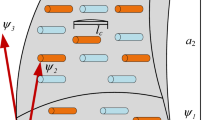Abstract
In order to promote the efficient use of composite materials in civil engineering infrastructure, effort is being directed at the development of design criteria for composite structures. Insofar as design with regard to buckling of composite shells is concerned, it is well known that a key step is to investigate the influence of initial geometric imperfection. At present, imperfection sensitivity study of composite shells has not been explored in detail. Thus, the objective of this paper is to present the formulation used in develo** a composite shell element and to validate the element from the composite curved panel. The non-linear formulation of the shell element is based on the updated Lagrangian method. The shell element is capable of small strain and large displacement analysis with finite rotations. In order to remove the rigid body rotation, a co-rotational method is used. Subsequently the postbuckling analyses from the modeling of the curved panel with initial imperfection damage are performed to investigate the effect of initial geometric imperfection shape and amplitude. The results are used to estimate imperfection sensitivity for such panels.
Similar content being viewed by others
Author information
Authors and Affiliations
Rights and permissions
About this article
Cite this article
Kim, K., Park, T. & Voyiadjis, G. Postbuckling analysis of composite panels with imperfection damage. Computational Mechanics 22, 375–387 (1998). https://doi.org/10.1007/s004660050369
Issue Date:
DOI: https://doi.org/10.1007/s004660050369




